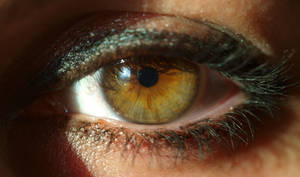Diagnosing Dementia Using Your Eyes
Interview with
Scientists can now spot the signs of dementia a lot earlier than ever before, by  looking at your eyes. They've found that degeneration of the eye, or retina, is linked to the parts of the brain affected by the disease. This finding suggests that the retina acts as a type of 'window to the brain,' which could help us find answers about dementia. Dr Li Gan is from the Gladstone Institute and University of California, San Francisco and she spoke to Hannah Tooley about what they've discovered...
looking at your eyes. They've found that degeneration of the eye, or retina, is linked to the parts of the brain affected by the disease. This finding suggests that the retina acts as a type of 'window to the brain,' which could help us find answers about dementia. Dr Li Gan is from the Gladstone Institute and University of California, San Francisco and she spoke to Hannah Tooley about what they've discovered...
Li - What we have found is that patients, even before they exhibit any symptoms neurologically, their eyes already show degeneration.
Hannah - And how did you measure that the eye was getting worse?
Li - So, this is an instrument that utilises the scattering of the light to measure the thickness of the retina. This kind of non-invasive instrument could very sensitively detect how many nerves are remaining in their eye.
Hannah - How did you carry out this research? Was it on animals or people?
Li - This is a study that combines looking at human patients but also using lab animals to modelling this disease. This disease is caused by a mutation. And so, we have generated lab animals that carry this mutation to model the disease. Also, we have used cells that models a disease. So, we have combined to model the disease. And because each system has their own advantages that allow us to get to the bottom of the cause of the disease.
Hannah - You said that this could be linked to dementia. What does dementia actually do to a person?
Li - So, there are different types of dementia and many of you may have heard of Alzheimer's disease. That is, dementia is the main symptom of memory loss. The dementia that I'm talking about that's caused by this mutation, the patients do not usually have memory, but they have a problem that could be even more devastating because they would exhibit a very different type of personality, a change of personality, a loss of social connection with their loved ones. A lot of them also have language problems. This is a different type of dementia, but nevertheless very devastating.
Hannah - And were you surprised by what you found?
Li - We're very surprised by how early the changes in the eyes are. We are monitoring these group of patients because it carries its mutation. So, we know they will eventually develop this devastating disease. However, a lot of them actually currently do not have any neurological symptoms. But when we look at their eyes, we found their eyes already degenerating. So, this is quite surprising. We have also seen similar phenomena in our animal models that we have developed. So, we think this is not only early, but also allows us to monitor non-invasively, how a treatment could do to a patient if we're ever to develop such a treatment.
Hannah - And how early are we talking here?
Li - In the patients that we have looked at, they have the mutations we know they eventually will develop disease that they do not yet have. So, it's hard to predict how much early we could detect. We just know that we can detect prior to the neurological symptom.
Hannah - What's the next step with this research? where do we go from here?
Li - So, we really want to go to the bottom of the question, why do neurons in the eye degenerate? Why do the neurons in the brain degenerate? Why do neurons in the eye degenerate first? That's the reason we used animal models and use cellular models to model the disease. What we found, one of the very important protein and nucleus is lost. If we enhance the levels of this protein in the nucleus, we are able to actually - at least in a dish - to prevent the loss of the neurons. So, we think this is a beginning to try to find drugs or treatment to stop the degeneration of these neurons. Once we have that, we could look at the patient's eyes, non-invasively, to see if the treatment is actually doing what is supposed to do.









Comments
Add a comment